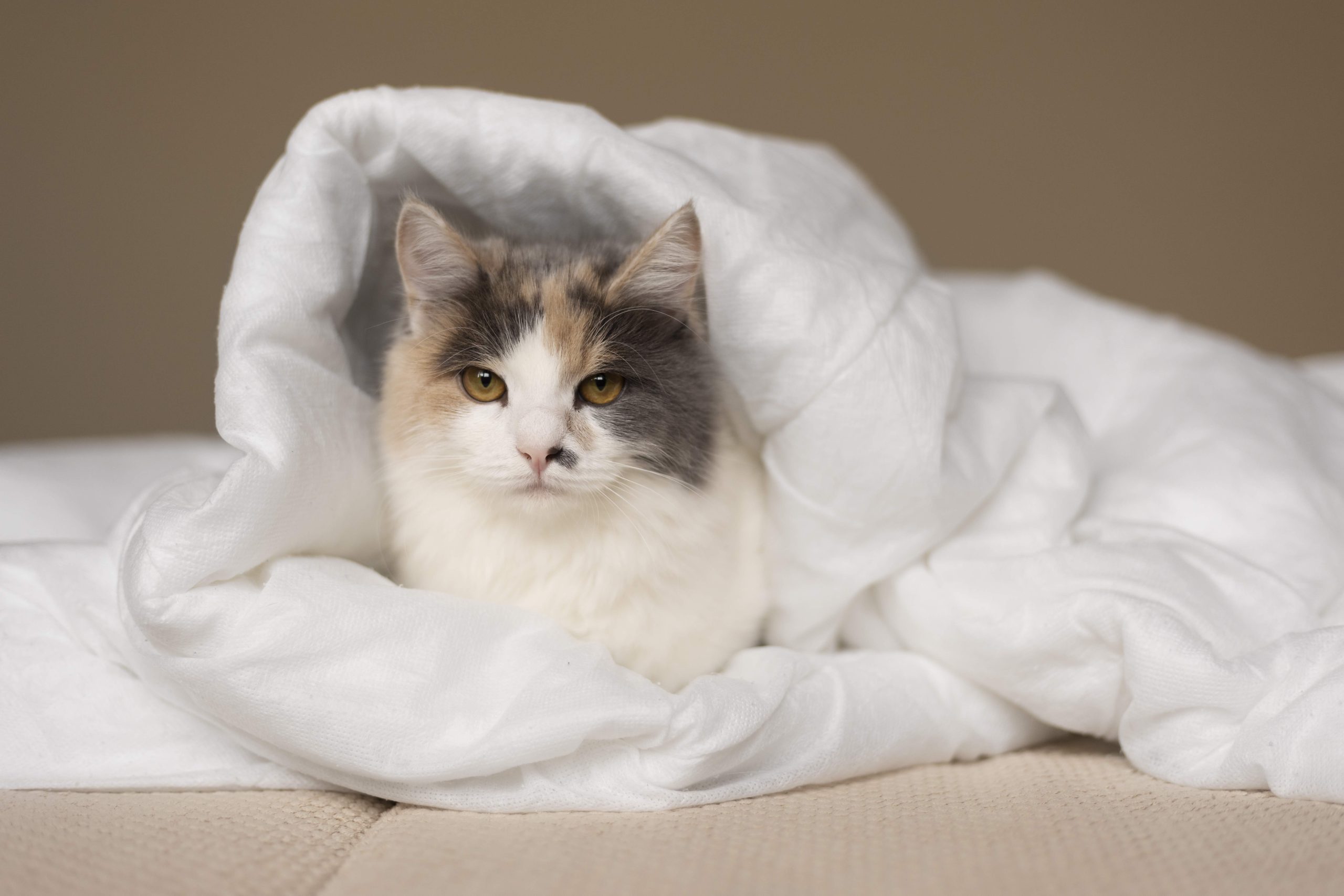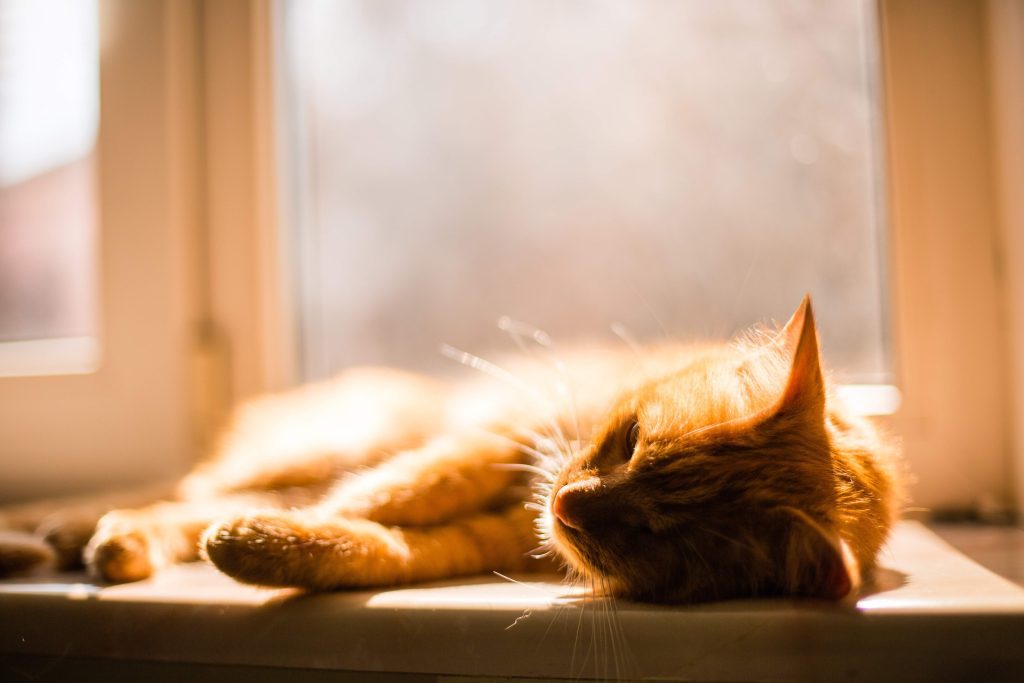Ever noticed how your cat always finds the warmest spot in the house—whether it’s a sunny windowsill, a laptop keyboard, or fresh-out-of-the-dryer laundry?
That’s because cats are naturally drawn to warmth, a trait rooted in their desert ancestry. Heated blankets offer an irresistible comfort, mimicking the cozy security of sunlit spaces.
But are they safe? Do cats truly enjoy them, or are we just projecting our own love of coziness onto them?
In this guide, we’ll look at why warmth matters for cats, how heated blankets can help senior or anxious cats, and what to keep in mind before you plug one in. Let’s find out if a heated blanket could be your cat’s new favorite nap spot!
Why Do Cats Like Warm Surfaces?
Cats naturally seek out warmth thanks to their desert ancestry. Descended from African wildcats, they’re adapted to find extra heat wherever they can.
With a body temperature of 100.5–102.5°F (38–39.2°C), they lose warmth quickly and love warm spots to stay comfortable. Warmth doesn’t just keep them cozy — it helps them feel safe, like curling up with their mother and littermates.
Older cats and short-haired breeds often crave warmth even more. But if your cat’s always seeking heat, it could hint at health issues like anemia or hypothyroidism. Safe, heated spots can help, but always watch for overheating.
Warmth matters, but not every heat source is safe. So, are heated blankets really a good idea for your cat? Let’s find out.
Are Heated Blankets Safe for Cats?
Heated blankets can offer warmth and comfort, especially for senior cats or those in colder climates, but safety is a major concern.
According to K&H Pet Products, human heating pads can cause heat stroke, burns, or even internal organ damage because they run hotter than is safe for pets. Plus, curious cats might chew on cords and risk electric shock.
Pet-safe heating pads with auto shut-off, like the K&H Thermo-Kitty Mat, are a safer choice. You can also try self-warming beds or microwavable warmers. Always supervise use, keep settings low, and make sure your cat stays comfortable.
Recommended Post
Why Does My Cat Knead My Blanket and Purr? Causes & Solutions
When NOT to Use Heated Blankets
While heated blankets can offer cozy comfort, they’re not the right choice for every cat. In some cases, extra warmth can do more harm than good. Avoid using heated blankets if your cat is any of these:
- A young kitten — Kittens can’t regulate body temperature well and are more prone to overheating. Stick to gentle, non-electric warming options.
- Sick or recovering from surgery — Certain medical conditions, like fevers or infections, can worsen with added heat. Always check with your vet first.
- Obese or sedentary — Heavier cats may struggle to move away if they get too warm, raising the risk of overheating or burns.
- Prone to chewing cords — Curious or anxious cats that chew may be at risk of electric shock with plug-in products.
When in doubt, stick with self-warming beds or microwavable pads — they’re cozy and safe without the extra worry. Your cat’s safety always comes first, so if you’re unsure, skip the heat and layer up instead.
Safety Guidelines for Heated Blankets
Veterinary experts caution that while cats love warmth, too much heat can lead to dehydration or stress. So, it’s best to stick with pet-safe heating solutions that have controlled temperatures to keep your cat comfortable and safe.
Petplan specialists recommend heated cat beds that warm only to a cat’s natural body temperature and include built-in thermostats and chew-resistant cords to reduce risks.
To keep your cat warm safely, always use the lowest heat setting, and check for UL, CE, or ETL certification for electrical safety. Never leave a heated blanket unsupervised, and place a soft towel over it — I always do this to prevent hot spots.
Watch for signs of overheating, like panting or restlessness. Inspect cords often, use protectors, and unplug when not in use. And if your cat isn’t interested, respect their choice.
Alternatives to Electric Heated Blankets for Cats
Electric heated blankets can pose safety risks, but there are plenty of safer, energy-efficient ways to keep your cat warm. Self-warming cat beds use heat-reflective materials to trap body heat — great for senior or arthritic cats.
Microwavable heating pads give short bursts of warmth but should always be wrapped in fleece to prevent burns. Thermal blankets made of fleece, wool, or Mylar provide steady insulation without any cords.
As Rover.com points out, heated cat beds made for pets use low wattage and safety features like claw-resistant covers, unlike standard human pads that can get too hot.
Heated cat caves naturally hold warmth, perfect for drafty spots. DIY ideas like a warm rice sock or a fleece-lined box work wonders too, and cost next to nothing. Try different options, test the heat, and place them in cozy, draft-free spots your cat loves.
You Might Also Like
Should You Let Your Cat Use a Heated Blanket?
Heated blankets can be cozy for cats, but safety always comes first. Some cats love the warmth, but overheating, burns, and electrical risks are real. If you use one, keep it on the lowest setting, watch your cat, and make sure they can leave if they get too warm.
A pet-safe heating pad or self-warming bed is usually a safer bet. In the end, your cat’s comfort should guide you — watch what they like and choose the safest option.
If this guide helped, pass it on to a fellow cat lover!

Hi, I’m Abir Ahamed—a writer, editor, and proud cat lover with a passion for feline welfare. I use my words to educate, inspire, and advocate for responsible pet care. Based in Bangladesh, I bring a unique perspective to Cats Question, hoping to help cat lovers make informed, compassionate choices.






